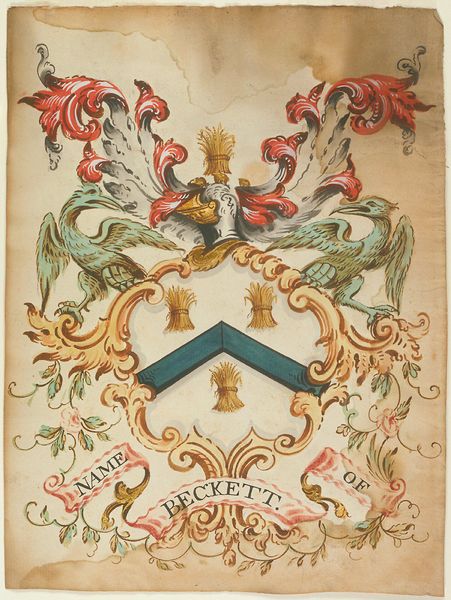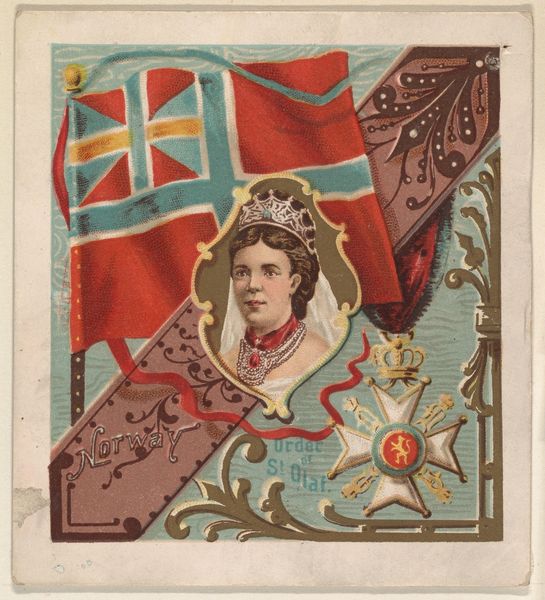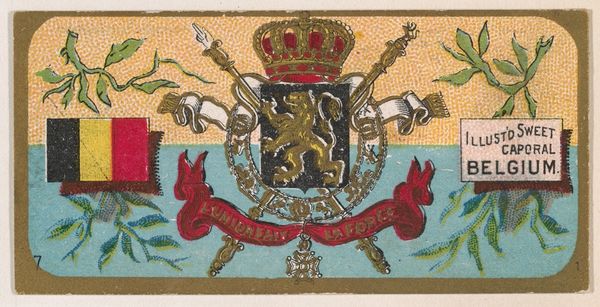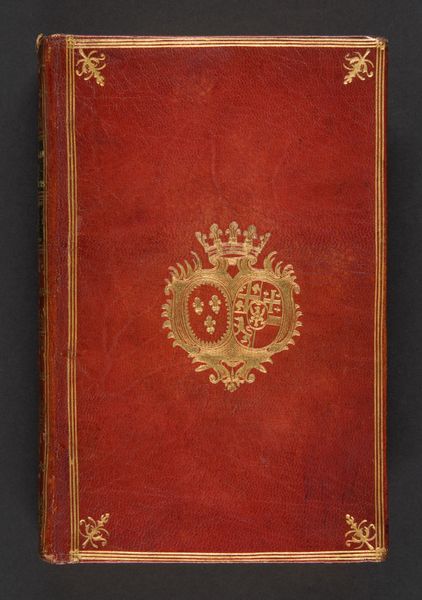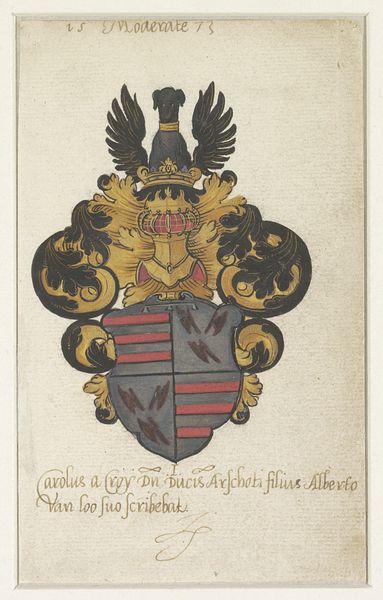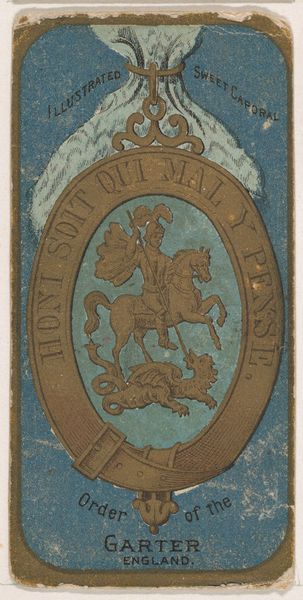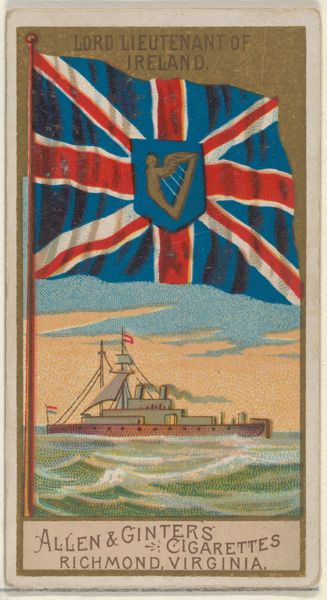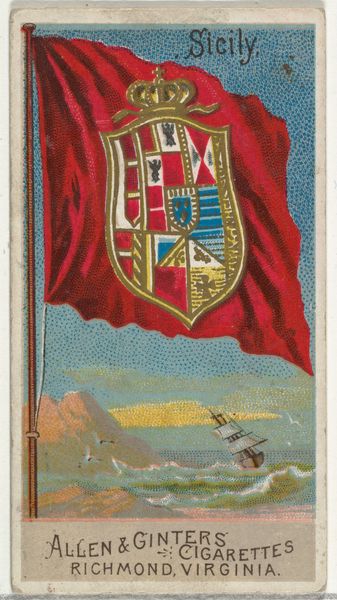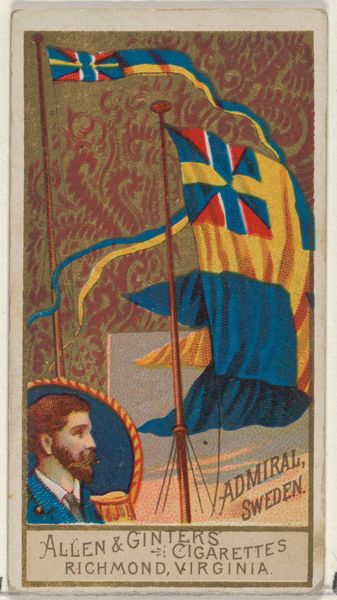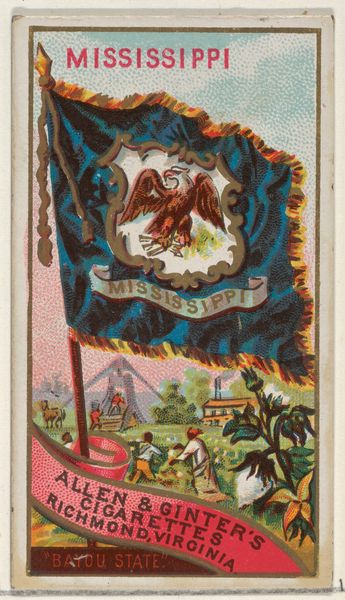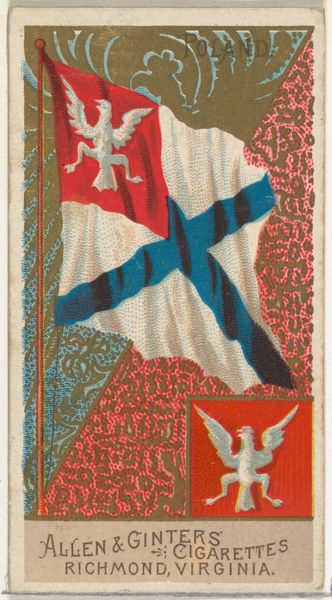
Naval Standard, Great Britain, from the National Flags series (N195) issued by Wm. S. Kimball & Co. 1891
drawing, graphic-art, coloured-pencil, print, paper, poster
drawing
graphic-art
coloured-pencil
water colours
paper
coloured pencil
poster
Dimensions: Sheet (trimmed): 3 9/16 × 2 3/8 in. (9 × 6.1 cm)
Copyright: Public Domain
Curator: Let’s turn our attention to this peculiar little print, "Naval Standard, Great Britain," produced around 1891 by Wm. S. Kimball & Co. as part of their "National Flags" series. It's currently residing at the Metropolitan Museum of Art. Editor: Well, my immediate reaction is one of curious disquiet. The rendering style is simple, even crude, but the arrangement is strikingly assertive and heraldic. The flag appears heavy, weighted with its symbolism. Curator: Indeed. The composition is quite structured, quadrant by quadrant, the red and yellow fields teeming with heraldic lions juxtaposed against the blue ground containing a Celtic harp. Look closely at the details – the rendering of the lions, the way the fields of color interact. It's fascinating how each component stakes its own visual claim. Editor: Precisely. It almost reads as a fragmented historical map. This feels like a blatant assertion of colonial power packaged in a rather palatable, collectible format. One almost wants to ask which Great Britain is being referenced and what is being conspicuously erased in this celebratory gesture. Curator: You raise an important point about colonial narratives, yet I think the graphic design of this print warrants further investigation in its own right. Consider the color palette: the stark blues, reds and golds. And note how the heraldic devices interact within this self-contained world. It almost creates an enclosed system of symbols. Editor: Certainly, the strategic deployment of such charged emblems seems purposefully constructed to evoke very specific ideas, even now. For me, this artifact represents that potent intersection where aesthetics collude with and disseminate cultural narratives of authority. Even the commercial element–advertisement–injects itself as another layer of interpretation and consumption. Curator: Perhaps a reminder then that the very form of aesthetic expression we may admire here also functioned within a context of very specific ideologies? It challenges us to remember the power structures, both implicit and explicit, at work within these forms. Editor: A crucial point to acknowledge as we navigate art history, one that continually forces us to reassess these so-called historical mementos that linger on display and memory.
Comments
No comments
Be the first to comment and join the conversation on the ultimate creative platform.

